Greetings!
And now, our Arabian Prologue complete, we’re onto India itself, (though don’t worry if you liked hearing about the UAE; there’s a Postscript later on).
So this is Incredible India, my travelogue about one of the most full-on countries on earth, a carnival of colours, faiths, poverty, tastes, sounds and smells. I loved it and am already thinking about a second trip… and maybe a third… and fourth. But sticking to this one for now, I’ll give a quick rundown on how this travelogue works. Like all the others, it charts the course of my wanderings, but unlike the others there are a couple of intermissions, discourses on some of the religions that I encounter there. Despite not wanting to sound like a stereotype, India is an extremely spiritual place, but often that onslaught of mysticism, religion and ritual can seem a little confusing. Well, at least it does for me, and so what the intermissions are my attempt to make sense of what I’m seeing and experiencing. That is what they are; what they are not are in-depth, accurate and balanced portrayals of the faiths of the east. They are personal and are not meant to offend anyone in any way. Please believe that.
But for now, welcome to India and, more particularly, welcome to Delhi… and some severe culture shock…
Keep travelling!
INCREDIBLE INDIA
Delhi
I can pinpoint exactly when it was that I decided to travel to India. The year was 2001 and I was in Japan. Sat at my desk in Ōsawano's town hall, I had just finished reading William Dalrymple's 'City of Djinns' which is subtitled 'A Year in Delhi' and is a record of just that. One chooses books, generally speaking, for two reasons; either the writer or the topic. This one was definitely because of the former. I'd read two of Dalrymple's earlier works, 'In Xanadu' and 'From the Holy Mountain' and they had blown me away. I wanted more of his writing and if the subject happened to be India, then so what? I'd never before considered the place, certainly it had never struck me as a country worth visiting. But after 343 pages of Mughal machinations, Ramayanan relics, scheming Sikhs, singing Sufis and eccentric Englishmen then I knew that, before I died, I had to see Delhi.
But I didn't do anything about it and my next Indian impetus was a long time in coming yet equally identifiable. It happened on a Tuesday in the September of 2006 in a classroom at Edge Hill University, (which, perversely, is in Ormskirk and nowhere near Edge Hill). I was considering a career as an RE teacher at the time and my enquiries had revealed that I would only be accepted onto the course if I completed what was called a SKBC (Subject Knowledge Booster Course) since I'd never formally studied the discipline of RE before. The SKBC was a two-week immersion into the religions of the world and how to study – and therefore teach – them. We looked at the concept of religion, its place in modern society and then hit the Big Six that are taught in British schools: Christianity, Islam, Judaism, Hinduism, Buddhism and Sikhism. It was, quite simply, the most fascinating and rewarding academic course that I have ever been on.
Christianity I, of course, knew pretty well, Islam too, and Judaism, (having a godfather in the local synagogue helps in these matters...), but then as we headed East, my knowledge began to waver. Not with Buddhism of course; two years in Japan and two more in Vietnam with a Buddhist wife meant that I had no fears in that department, but Hinduism, well, I'd always found that a bit of a struggle and as for Sikhism, to be honest, aside from the fact that they wear turbans, I hadn't a clue and, what is more, had never been interested.
As expected, the doctor who spoke on Hinduism revealed much but still left me somewhat confused, but then, on the last day of study, quite contrary to all my expectations, the schoolteacher who spoke on Sikhism introduced me to a faith that was easy to comprehend, relevant and, more than all else, appealed to me immensely. Guru Nanak, the founder, leapt off the pages as a figure of the highest spirituality and when I had to choose a topic for my independent study I plumped for him and his Four Udasis (expeditions or journeys) to the North, South, East and West.1 To one besotted with both God and travel, how could I have chosen anything else?
The final push however, that eventually sent me hurtling across the sky to Indira Gandhi International Airport in New Delhi came from quite a different direction entirely. About a year before when reflecting on my teaching, (as all good teachers are taught to do), I'd noticed that my relationship with my Pakistani students was noticeably worse than with those of other nationalities. After pondering over this for a while I came to the conclusion that this was because, unlike the homelands of most of the others, I'd neither lived in nor visited Pakistan, nor indeed had I ever studied it or read about it. True, I could talk to them at length about Islam and cricket, but beyond those two topics I knew nothing of their world and what is more, if I am to be perfectly honest, nor was I really interested in it.
Interested or not, in the cause of professionalism, I decided that it must be rectified and so I took a book out of the local library detailing the political history of Pakistan. It was a dry, academic tome but even so I found it to be of great interest. Pieces of a jigsaw that I'd never understood began to fall into place – Why are so many of Britain's Pakistanis from Kashmir? How come Pakistan got so radicalised in the last thirty years? Why does it never seem to get any richer? - the book answered them all and much more besides. It also initiated conversations with my students, surprised and happy that a 'goreh'2 was finally taking an interest in them. Indeed, it was so successful that I decided that my next big trip would be to Pakistan.
Until I saw the price of the visas. £100 and that was before all the charges. It was daylight robbery and it fitted in well with all the tales of bureaucracy and corruption that I'd read about. Fascinating though Pakistan might be, no way was I being fleeced like that! But before giving up the idea completely, why not revise it slightly and visit the country next-door instead? I remembered 'City of Djinns' and I remembered the Golden Temple in Amritsar. To see the holy sites of the Sikhs and to admire the relics of the Mughals in Delhi, what could be finer? And on top of that, a chance to visit some Sufi shrines, landmarks of the British Empire and perhaps get a grasp on Hinduism at the same time. All of that and, oh yes, I almost forgot, the Taj Mahal. If Pakistan was not to be, then it would be India itself, one of the most spiritual and influential countries on earth, the home of three of the six great world faiths.
Not that I was feeling particularly spiritual as I arrived at Indira Gandhi Airport mind you. Primarily, I was tired after two nights devoid of sleep; after that I was stressed. Nonetheless my eyes were wide as I took a genuine Ambassador taxi into the city, drinking in the typical Third World detritus around the outskirts, the brightly-painted lorry with the slogan “Sound horn please!” across its back, the elevated Delhi Metro, the monument to the Salt March of 1930 and then the scruffy morass of Paharganj, the budget accommodation district, where I booked into the City Palace Hotel for the princely sum of 900 rupees (£11) per night where I collapsed onto my bed for a few hours' sleep, hoping to awaken around noon for my first day's sightseeing.
I didn't rise until past three in the afternoon. I was annoyed at losing the best part of a day but I shouldn't have been; I had a lot of sleep to catch up on after all.
My first Indian explorations were, like those of so many tourists, around the enclave of Paharganj. I changed some money and then indulged in some street food, a potato patty deep-fried with some chilli and chutney.3 It was delicious, absolutely incredible and a great introduction to Indian cuisine. The rest however, was less positive; Paharganj was an absolute dump and I had no idea where I was exactly so I hailed a rickshaw to take me to New Delhi Railway Station and paid the princely sum of 50 rupees for the pleasure, (I later learnt that it should have been 20).
The area around the railway station was no better than that which I had left: scruffy, filthy and crowded and my luck didn't improve either for there were touts everywhere telling me that the Foreign Ticket Office isn't that at all whilst all the ATMs at the station refused to disgorge any cash. Eventually though, I located one that would and then went to a travel agent to book my ticket onwards to Amritsar for 1,400 rupees (original price 900) and then, business done and the sun setting fast, I at last could do a little sightseeing.
After reading 'City of Djinns' there was one area of the city that I wished to see more than any other and that was the old Mughal medina in and around Chandni Chowk. The distance didn't look far on the map so I hailed a rickshaw and set off to the old part of Delhi.
Maps however, can be deceptive, and Delhi was a bigger city than I had thought, but the half an hour or so that I made that poor rickshaw wallah work taught me more about this incredible country that I'd landed myself in. it was crowded, scruffy and chaotic, yes indeed, but then so are Indonesia, the Philippines and Vietnam. India however, had something extra as well, not class for sure since this place was filthier than anywhere else that I'd ever set foot in, but instead an element of weirdness, eccentricity. On that short journey I passed cows in city streets, rubbish collectors, the shrines of a dozen sects and a completely naked man just wandering down the road as if such behaviour is totally normal. Who knows? Perhaps in India it is?
The rickshaw wallah dropped me off in a huge market near to Chandni Chowk. I headed off in the direction that he pointed through a vast, seemingly never-ending grid of stalls selling car parts or other small, unfathomable bits of metal. Realising that the spark plugs and the radiators of all models of Nissan were not what I had travelled 8,000km to see, I looked to find my way out of that maze for mechanics and after climbing some steps I was back in reality.
But this was an Indian reality, not mine and I soon learnt that I had in fact stepped out of the frying pan and into the fire, except that this was a fire that I rather enjoyed roasting in. I delved down an alleyway and spent the next hour or so hopelessly lost in the twisting backstreets and alleyways around Chandni Chowk. I passed through an area where every shop sold saris and another that was all bookshops; I wandered past tiny streetside shrines where the devout chanted and clanged in time to the tacky flashing lights surrounding their deity of choice; I tasted more streetfood – a deep-fried pancake and bread with chilli and pickle – before heading into a region selling only cooking utensils. The problem was that I thought that I was in a different place to where I actually was. I was convinced that the rickshaw wallah had dropped me off at the Lajpat Road Market to the north-east of Chandni Chowk whereas in fact he had deposited me in the Car Parts Bazaar (the clue was in the products I suppose) by the Jama Masjid to the south-east. Consequently, when I finally did emerge onto Chandni Chowk I thought I was on the opposite side to that which I really was and so headed off to the west when I wanted to go east. It was sometime before I realised my mistake.
To be fair though, whichever side you ended up on, Chandni Chowk was no great place to be. Built originally as the principal avenue of the city in 1648, it was lined with trees and had a canal running down the centre whilst halfway along was constructed a caravanserai which was described by visitors to the city as being the most magnificent building in Delhi outside the Red Fort. Today however, as Dalrymple explains far more eloquently than I ever could, the visitor experience ain't quite so positive:
'But instead, as you sit stranded in a traffic jam, half-choked by rickshaw fumes and the ammonia-stink of the municipal urinals, you can see around you a sad vista of collapsing shop fronts and broken balustrades, tatty warehouses roofed with corrugated iron and patched with rusting duckboards. The canal which ran down the centre of the bazaar has been filled in; the trees have been uprooted. All is tarnished, fraying at the edges.'4
Although there are traces of former glories here, beautiful Mughal and British Era buildings, they are crumbling and half-derelict, interspersed with the utilitarian concrete constructions of all Third World cities, the smell of traffic fumes overpowering the thousand and one other pungent aromas. Nonetheless, I was glad that I'd come for midway down Chandni Chowk I spied the Sis Ganj Gurdwara, one of the holiest sites in the world for Sikhs.
Sis Ganj is built on the site of the imperial execution ground for that is where the Ninth Guru, Guru Tegh Bahadur, was martyred. Orthodox Sikh tradition states that the Emperor Aurangzeb had him killed because he intervened on behalf of Brahmin Hindus in Kashmir whom the Mughal Emperor was trying to force to become Muslims.
'For their forehead mark and their sacred thread he wrought a great deed in the Age of Darkness,
If this is true – and there is an alternative Sikh tradition which makes no mention of the Hindus – then his story is remarkable. Many people over the years have been martyred for their faith, but how many, if any, have been martyred for the faith of others?6
Sis Ganj was busy and under renovation but it felt different the moment that I entered its precincts. Outside was filthy and chaotic, inside all was clean and ordered. I left my shoes with the attendant and looked around. I saw the site of a holy well where the Guru had taken his last drink and then went up to the main prayer hall. Outside it was the office where donations are made so I went to give something and the attendant took it on himself to show me around, taking me round the back of the shrine where I dropped my money and then through a room filled with enormous bags of flour and tubs of ghee to the langar, the communal kitchen instituted by Guru Nanak in order to help smash the prejudices of caste. In Sikhism there is a sacred obligation to feed all who come to the door so long as they are prepared to sit together as equals and so I was led to the vast hall where I sat cross-legged in a row whilst be-turbaned gents served me delicious vegetarian food. After this I thanked the attendant and then returned to the prayer hall, a beautiful gold-encrusted chamber in the centre of which the book – the eternal Living Guru, Guru Granth Sahib – was placed whilst an elder read out the scriptures aloud to the sound of a sacred band. It was indescribably beautiful and I sat on the plush carpet, closed my eyes and let it enfold me. India was shocking, horrible, dirty and stressful and yet at the same time this was beautiful, so unique that it was bowling me over. Such a battering of the senses and emotions after only a single day, most of that spent asleep in bed. What on earth would tomorrow bring?
I'd arranged a wake-up call for eight but I slept straight through it and did not emerge into the waiting world until one – the jet-lag was obviously worse than I had anticipated. I took a rickshaw to the tourist office to pick up my railway ticket and then wandered around the backpacker ghetto of Paharganj, (my hotel was in a different part of the district), where I bought some books to read. I then enjoyed a “Punjabi menu” in a small eatery near to the railway station before heading for my train.
The meal was served on a metal tray and consisted of a number of helpings of curries and chutneys supplemented by chapattis. I was going entirely vegetarian on this trip, partly because it is recommended for newcomers to India as a way of avoiding the dreaded Delhi Belly but more because it was Lent for at least a portion of my trip and I always abstain from meat during the period of fasting anyhow. Nonetheless, I was entering this period of vegetarianism with trepidation; successive Lents in both the Far East and Europe have taught me that veggie food is, without exception, pretty dull. However, so far in India I had to admit that I hadn't found it so, indeed, quite the contrary and as of yet I wasn't missing the meat at all.
My train was the Shatabdi Express, one of Indian Railways' premium services, covering the three hundred or so miles to Amritsar, the holy city of the Sikhs, in under six hours. All my fellow passengers were Indian save for an elderly gay white guy and his young Thai boyfriend, a couple who attracted far less attention this side of the Indo-Pak Border than I suspected they would have done on the other. I settled back in my seat and watched the heart-wrenching slums of the city roll past before they gave way to lush green – yet rather flat and dull – countryside. Good for the farmer maybe – the Punjab is referred to as the 'Breadbasket of India' so fertile is its soil – but not so for the spectator and so I switched my attentions to reading a translation of the Bhagavad Gita that I'd purchased in Paharganj and, when that proved too dull and inaccessible, the far raunchier 'Flashman at the Charge'.
1Some Sikh sources talk about a 5th Udasi after the others around the Punjab, but generally only four are listed.
2White
3Vada pao
4City of Djinns, p.54
5Bachitar Nātak
6The only other example I could find was Britain's first Christian saint, St. Alban, who was a Pagan who died in the place of a Christian priest that he was harbouring. However, tradition states that he converted to Christianity before his execution so perhaps he does not fit into this category.
Technorati Tags: uncle travelling matt,travel,blog,incredible india,india,delhi,city of djinns,william dalrymple,edge hill university,skbc,ormskirk,guru nanak,udasis,sikhism,indira gandhi international airport,pakistan,goreh,british empire,ambassador taxi,salt march,gandhi,paharganj,city palace hotel,rickshaw,wallah,new delhi railway station,chandni chowk,car parts bazaar,vada pao,streetfood,vegetarian food,mughal gurdwara,sis ganj,guru tegh bahadur,aurangzeb,langar,guru granth sahib,punjab,punjabi menu,shatabdi express,amritsar,bhagavad gita,flashman at the charge,railways
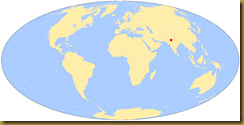


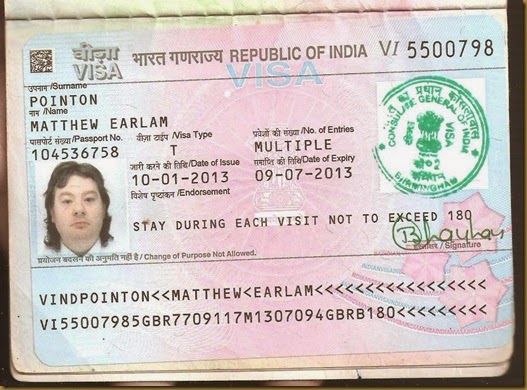

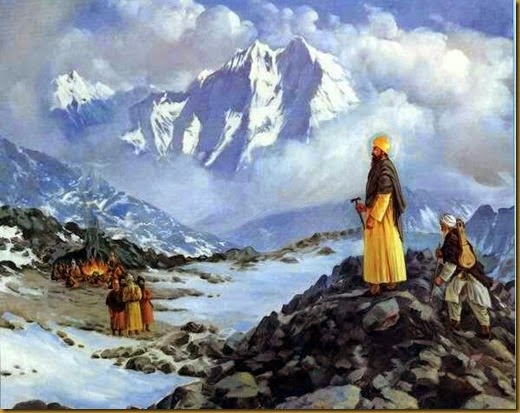
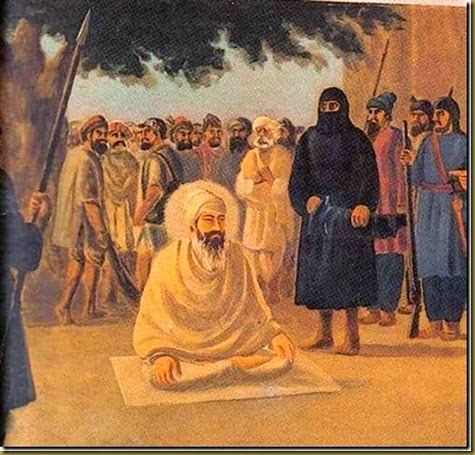

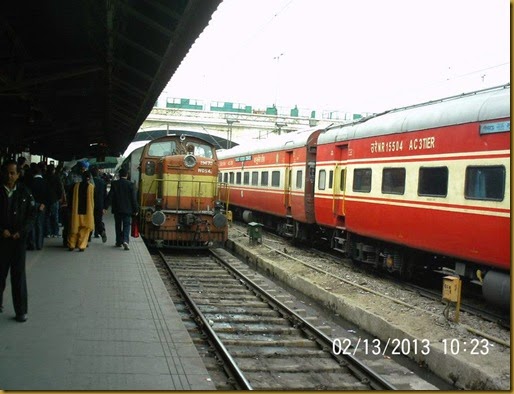
No comments:
Post a Comment